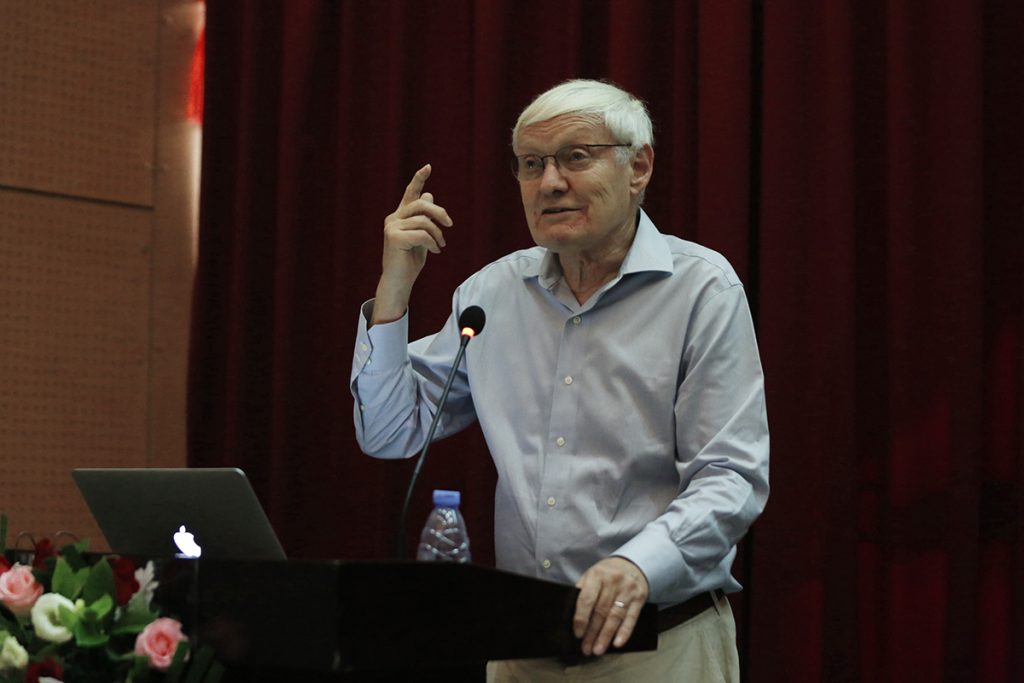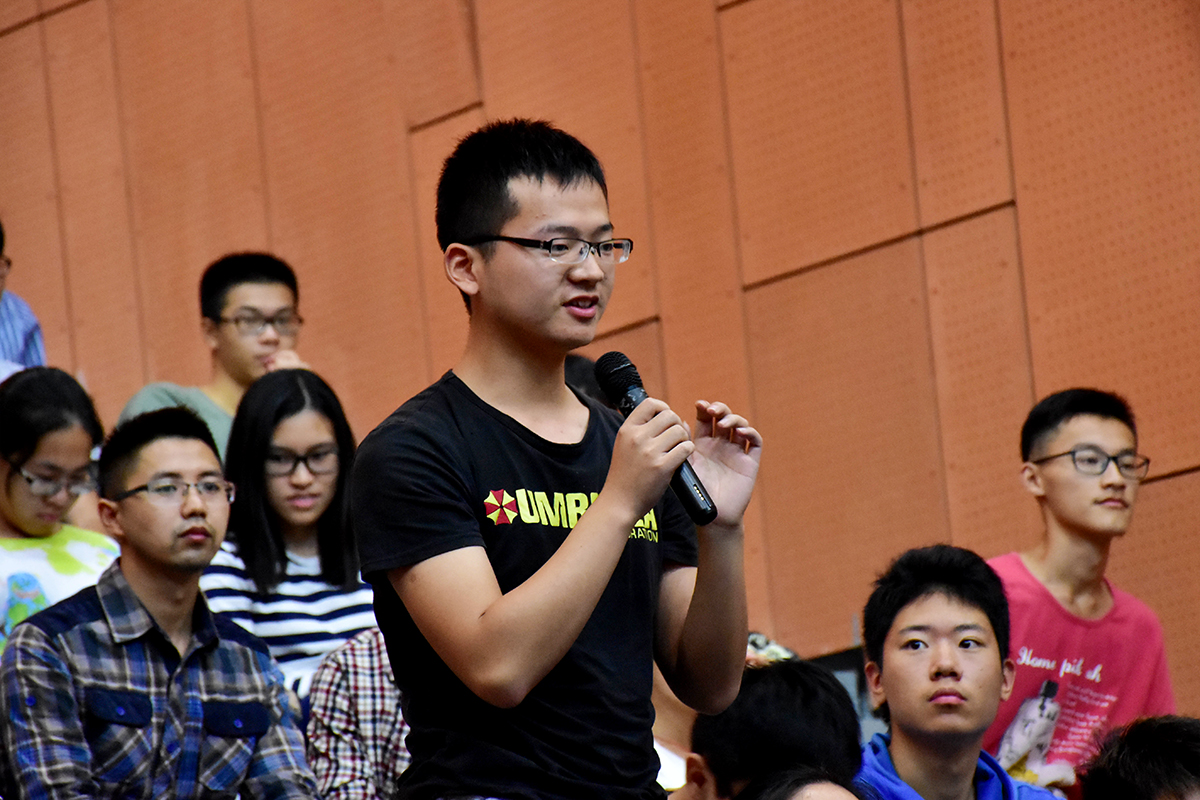This week saw Nobel Laureate Joachim Frank return to Southern University of Science and Technology (SUSTech) to lecture on “Single-Particle Cryo-EM – Visualization of Biological Molecules in Their Native States.”

Joachim Frank is a German biophysicist and is currently a professor at Columbia University, and is known for inventing cryo-electron microscopy. He has also made important contributions to the study of the ribosome structure and the function of bacteria and eukaryotes. Joachim Frank was elected to the American Academy of Arts and Sciences, and the National Academy of Sciences in 2006. He was awarded the Benjamin Franklin Life Science Award in 2014 and the 2017 Nobel Prize in Chemistry for his work in the field of cryo-electron microscopy image processing.

In the lecture, Joachim Frank introduced the significance of the invention of single-particle cryo-electron microscopy and pointed out that due to the rapid development of direct electron detection technology in recent years. Cryo-electron microscopy has become one of the most advanced research methods in structural biology. He mentioned that cryo-electron microscopy provides a high-resolution output and can maintain the original structure of the studied molecules. Nowadays, the academic community pays more and more attention to this technology.
Joachim Frank reviewed the development of the cryo-electron microscopy technology. He also spent time introducing the single-particle and rapid freezing technologies, along with discussing the other test methods used in cryo-electron microscopy. Through the use of metaphors, Joachim Frank vividly demonstrated the structure of the microscope, before stepping back to give his perspective on its future applications in biology and molecular medicine.

As the first lecture of the autumn 2018 semester, the lecture theatre was full of enthusiastic freshmen, along with other students and faculty members. Joachim Frank answered the freshmen’s numerous questions patiently. This was Joachim’s second visit to SUSTech this year, after his visit in July.
Proofread ByXia Yingying
Photo ByStudent News Agency